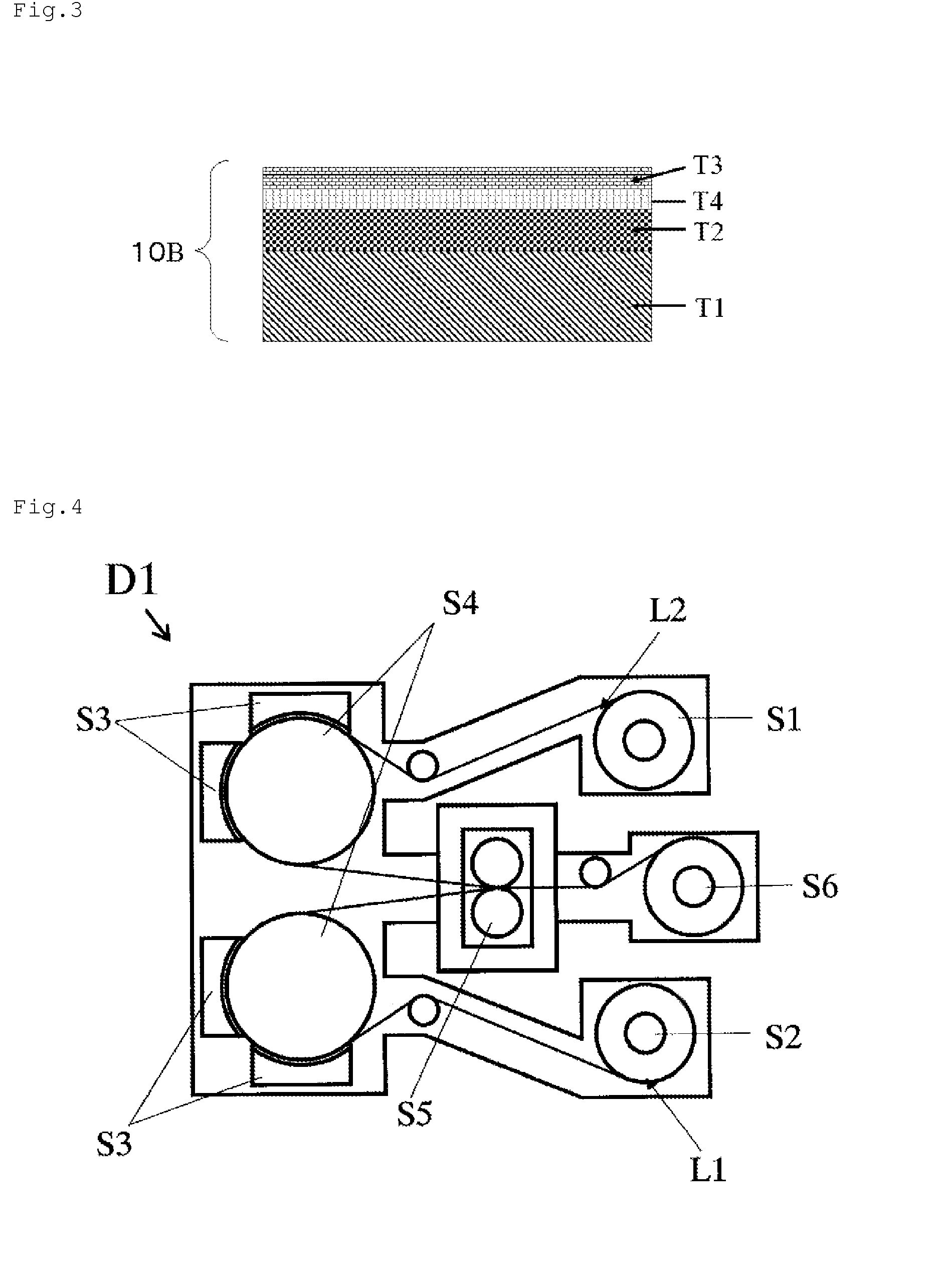Method for manufacturing metal laminated substrate for semiconductor element formation and metal laminated substrate for semiconductor element formation
a technology of metal laminated substrates and semiconductor elements, which is applied in the direction of metallic pattern materials, chemically reactive gases, crystal growth processes, etc., can solve the problems of high cost of ni—w alloys, difficult handling of monocrystalline wafers made of si or the like during the conveyance of wafers, and inability to form monocrystalline wafers by continuous manufacturing methods such as reel-to-reel methods, etc., to achieve low cost, high thickness accuracy, and high reduction
- Summary
- Abstract
- Description
- Claims
- Application Information
AI Technical Summary
Benefits of technology
Problems solved by technology
Method used
Image
Examples
example 1
[0071]Hereinafter, an embodiment of the present invention is exemplified, wherein properties of the manufactured metal laminated substrate are explained. A high-reduction rolled Cu foil (metal foil) having a width of 200 mm and a thickness of 18 μm and an SUS316L plate (metal plate) having a thickness of 100 μm are bonded to each other by a room-temperature surface activation bonding method and, thereafter, the high-reduction rolled Cu foil and the SUS316L plate are subjected to heat treatment at a temperature of 200° C. to 1000° C. for five minutes thus acquiring the metal laminated substrate.
[0072]Table 1 shows a rate at which a Cu (200) surface is made parallel to a Cu foil surface, that is, a crystal orientation rate (a diffraction peak strength rate of a (200) surface at a θ / 2θ diffraction peak measured by X-ray diffraction: I(200) / ΣI(hkl)×100(%)), and a Δφ° (φ scan peak (an average value of half value widths of 4 peaks at α=35°) obtained by an Ni (111) pole figure in accordanc...
PUM
| Property | Measurement | Unit |
|---|---|---|
| Temperature | aaaaa | aaaaa |
| Temperature | aaaaa | aaaaa |
| Fraction | aaaaa | aaaaa |
Abstract
Description
Claims
Application Information
 Login to View More
Login to View More - R&D
- Intellectual Property
- Life Sciences
- Materials
- Tech Scout
- Unparalleled Data Quality
- Higher Quality Content
- 60% Fewer Hallucinations
Browse by: Latest US Patents, China's latest patents, Technical Efficacy Thesaurus, Application Domain, Technology Topic, Popular Technical Reports.
© 2025 PatSnap. All rights reserved.Legal|Privacy policy|Modern Slavery Act Transparency Statement|Sitemap|About US| Contact US: help@patsnap.com



